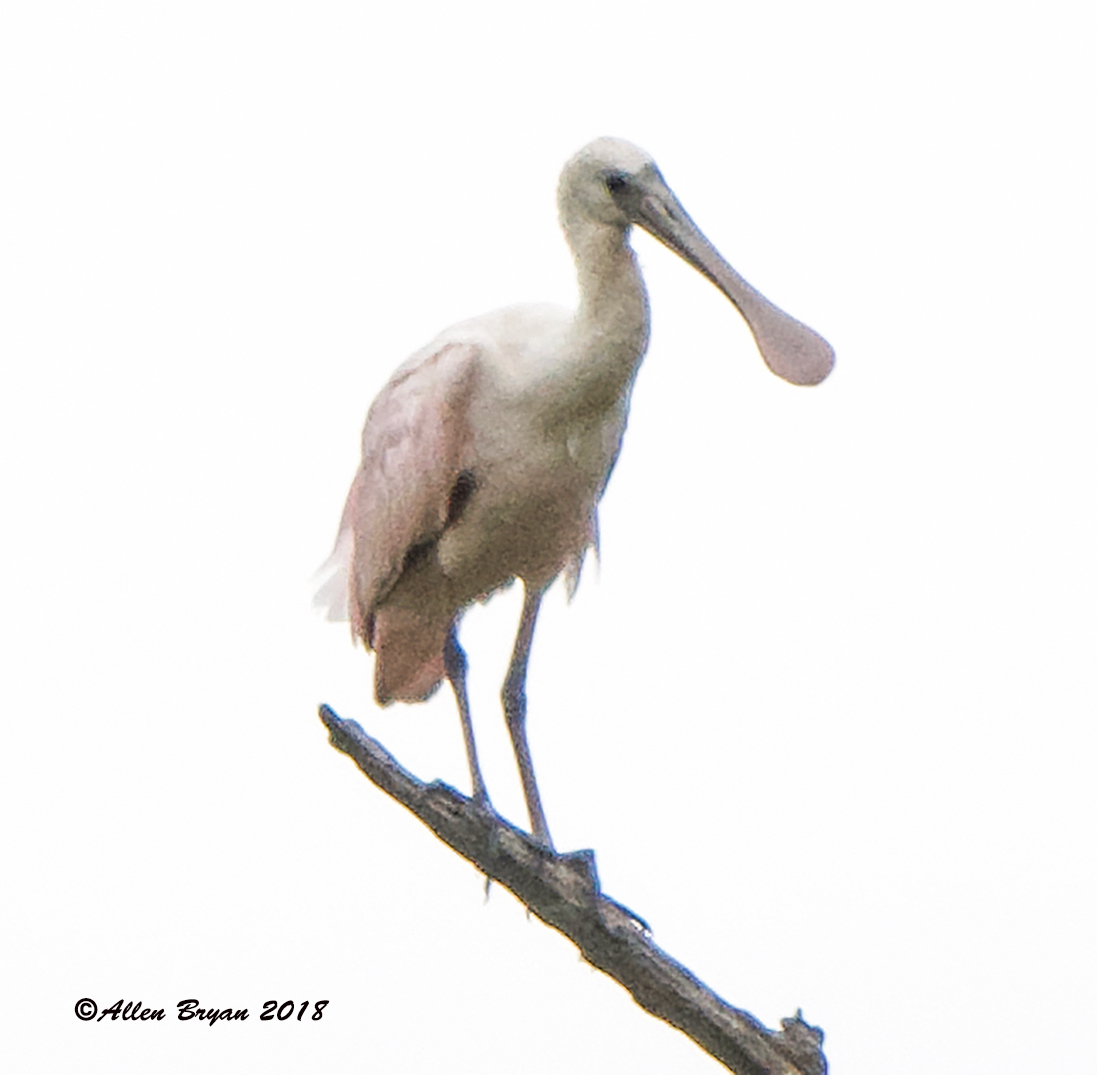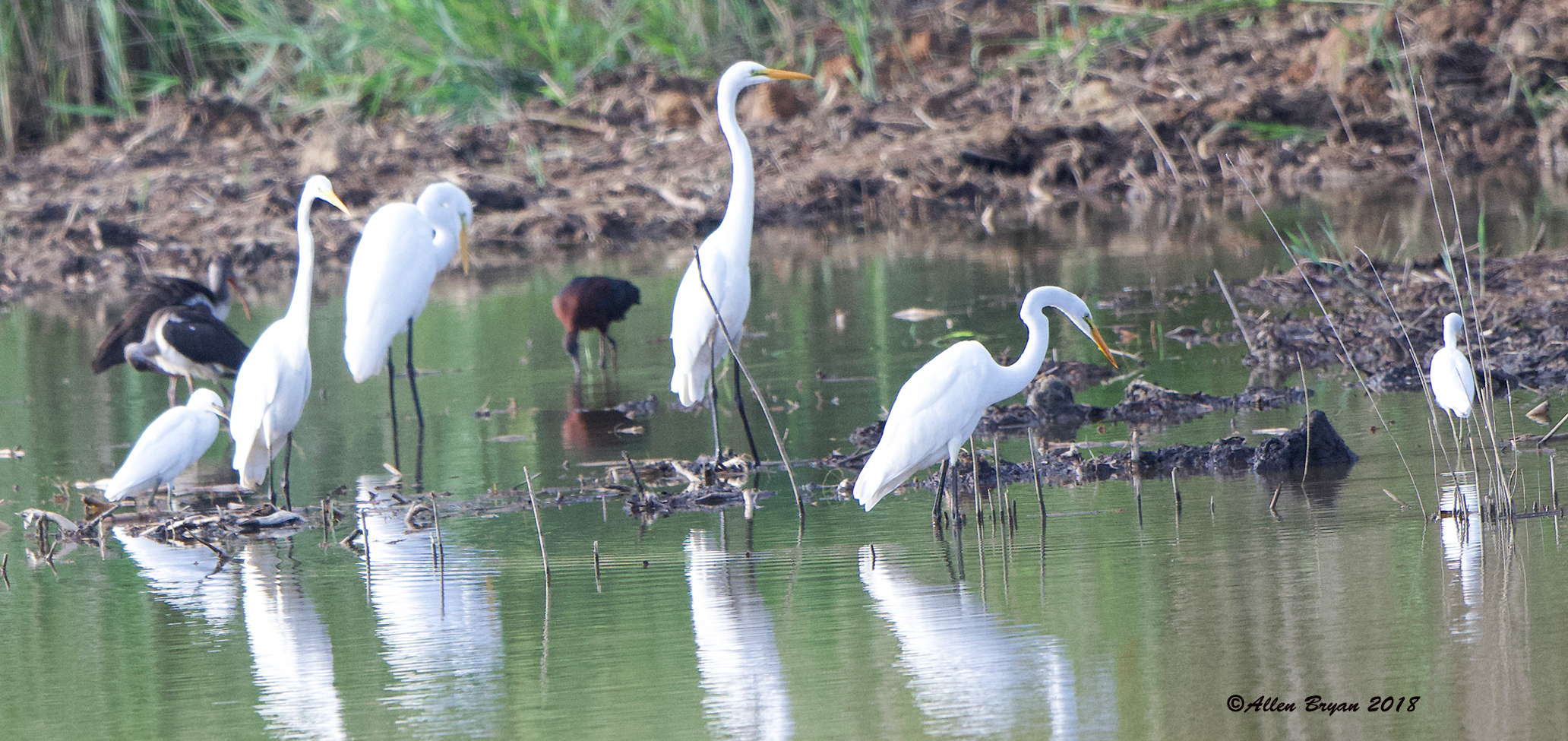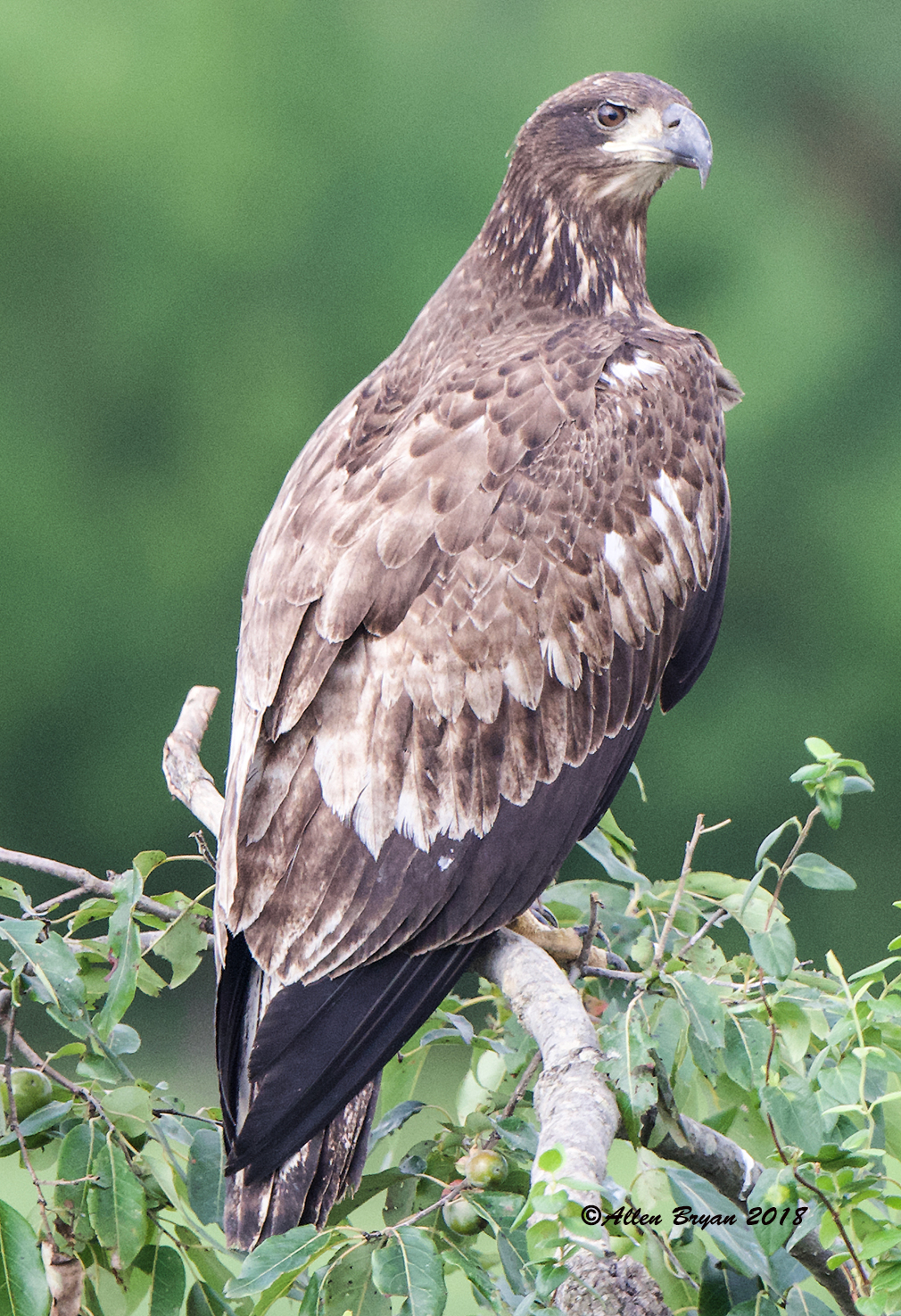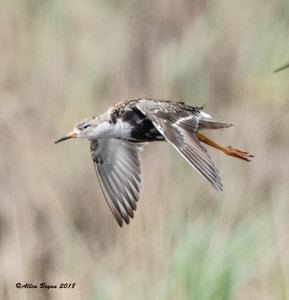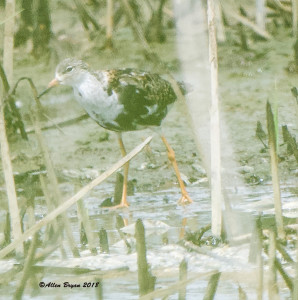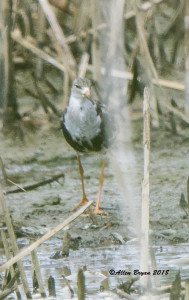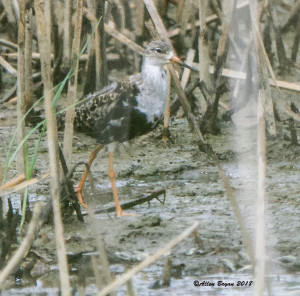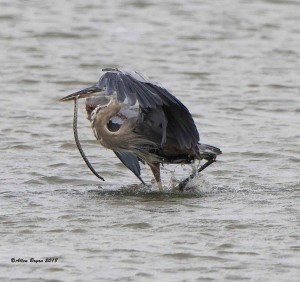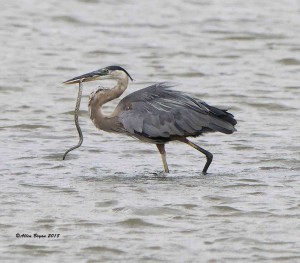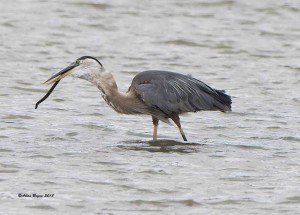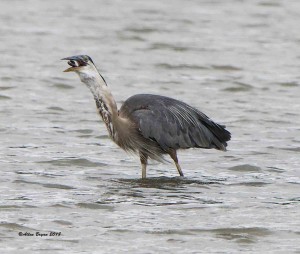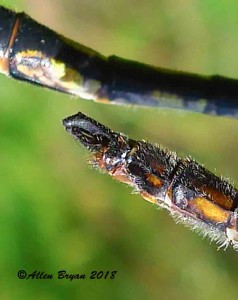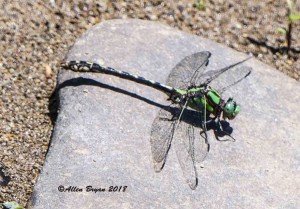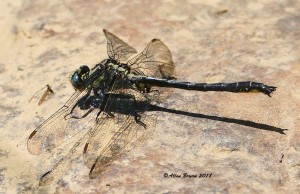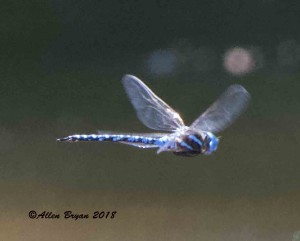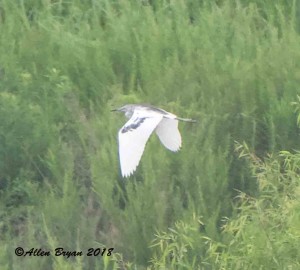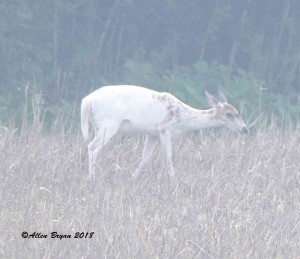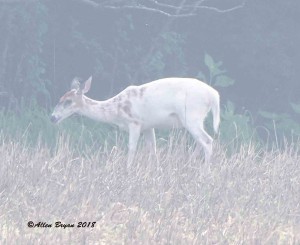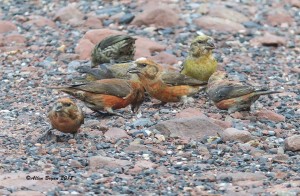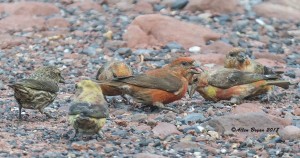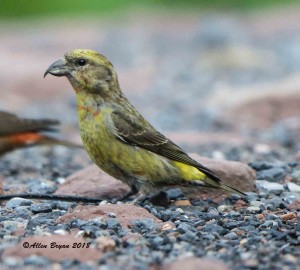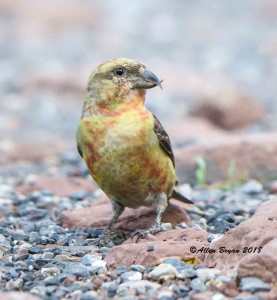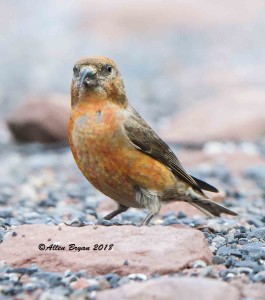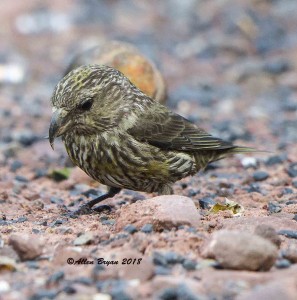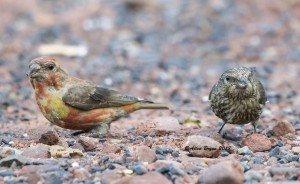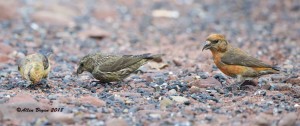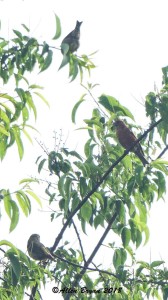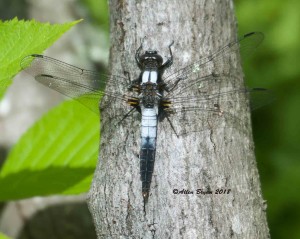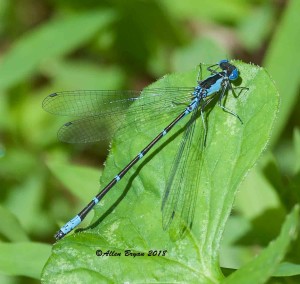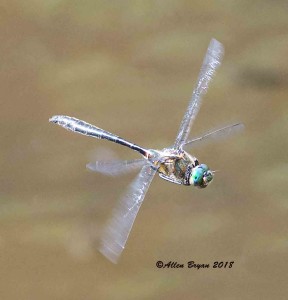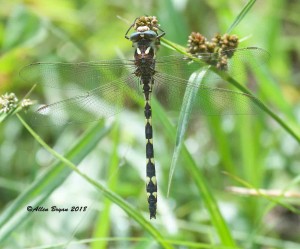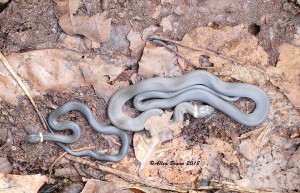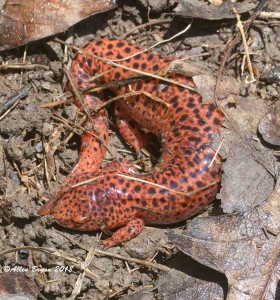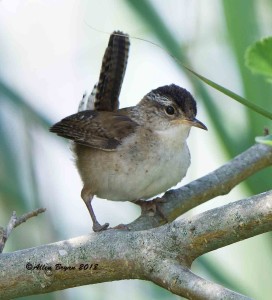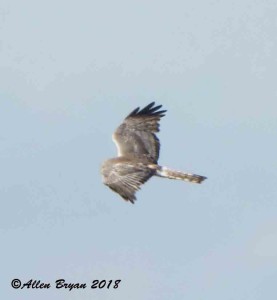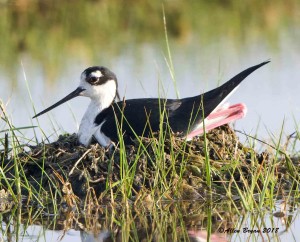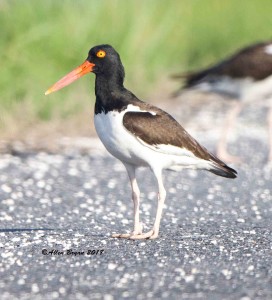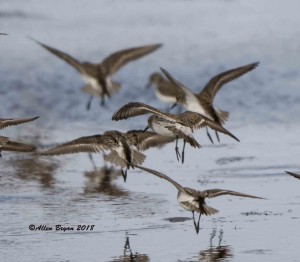July 26, 2018
I returned to Hog Island WMA this morning in hopes of more shorebirds only to find that the last several days of rain have filled up most of the impoundments. Shorebirds were few and far between. Waders continue to be present with the addition of a Roseate Spoonbill being added to the species observed.
July 23, 2018
I visited Hog Island Wildlife Management Area (WMA) today in hopes of photographing the Ruff that had been found by Andrew Baldelli several days ago. I encountered Len Smock and together we found the bird in the impoundment in which it had been previously reported. Below are several marginal photographs from the encounter as the impoundment has phragmites growth which limited clear vantage points.
While at Hog Island WMA, I also observed a Great Blue Heron eating what I think was a Northern Watersnake (Nerodia sipedon). Some images are below:
June 14, 2018
I traveled to Highland County today to check on the status of some breeding bird species as well as to check some sites for potentially flying odonates. At Locust Springs, I found Magnolia Warbler, Red-breasted Nuthatches and Yellow-bellied Sapsucker. At Bear Mountain, I noted the expected breeding Savannah and Vesper Sparrows.
While “odonating” I ran into Mike Boatwright. We had the good fortune to net a single Beaverpond Basketail, which are nearing the end of their season. Some other species noted during our visit were Harpoon Clubtail, Least Clubtail, Dot-tailed Whiteface and Spatterdock Darner.
June 13, 2018
I visited Charles City County this morning and noted an early Little Blue Heron. Two Great Egrets were also noted which are routine this time of year.
June 10, 2018
This morning was uneventful except for a partially leucistic White-tailed Deer observed in New Kent County. Both sides of the deer appeared similar with coloration.
June 9, 2018
It was a kaleidoscope of color today with Red Crossbills. I traveled to both Rockingham and Augusta Counties today and was fortunate to observe 3 separate flocks totaling 17 individuals. The flock at the known Rockingham County site (8) provided convenient observation and were in an array of plumage due to age group/moult and sex.
The groups observed and heard in Augusta were less obliging but none the less were a welcome observation.
I spent the remainder of the morning photographing some odonates and trying my hand at herping. Both Chalk-fronted Corporals and Aurora Damsels were fairly common at a couple of sites today.
American Emeralds were flying at a couple of sites and a few Brown Spiketails were enjoyed.
My attempt at herping was marginally successful as I encountered a couple of Northern Ring-necked Snakes and a Northern Red Salamander.
June 6/7, 2018
I traveled to the Virginia eastern shore for a visit to Saxis Marsh and the Chincoteague area. With the breeding season well underway I was hoping to photograph a few of the breeding species that we have along the Virginia coast and to get an idea of the various species population numbers.
At Saxis Marsh, which I visited during both the early daylight hours and for a couple of hours overnight, it proved most enjoyable. The winds were mild and the mosquitos were reasonable during my visits at this location. I found Marsh Wren, Clapper Rail, Virginia Rail and Seaside Sparrows to be “common”. With traffic being light, especially overnight, I stopped frequently along the road and got to hear these species singing for their mates and territory. During the daylight hours I noted both an immature male Northern Harrier and a female foraging in the marsh.
The Chincoteague area provided some good photographic opportunities for some of our breeding shorebirds.
Lingering shorebirds included Short-billed Dowitchers, a few Yellowlegs and probably still in migration (?) were good numbers of Semipalmated Sandpipers and a couple of White-rumped Sandpipers.
